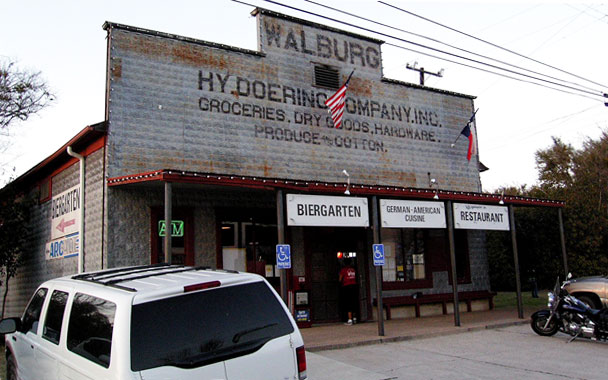In cumulative numbers, Germans form the largest immigrant group to the United States. Their arrival peaked in the latter half of the 19th century; 17 percent of modern American citizens have some German ancestry. The meat-and-potatoes cuisine of Germany has had a substantial influence on the melting cooking-pot of America, too, especially in the Midwest, giving us such important dishes as frankfurters, hamburgers, brats, potato salad, and meatloaf, in addition to inculcating a love of mustard, sauerkraut, and vinegary composed salads.
But German cuisine per se has not fared quite as well here. Two world wars in which Germany was the enemy pushed the cuisine to the sidelines, and the fat-phobic 1990s and carb-hating 2000s have further dampened its appeal. Still, pockets of German cooking have continued to thrive, and I’ve dined over the last few years in German restaurants in places as far-flung as Milwaukee (Mader’s), Staten Island (Killmeyer’s), Redwood City, California (Gourmet Haus Staudt), and Honesdale, Pennsylvania (Alpine Restaurant). Nevertheless, rural Texas was not a place I figured on finding a full-blown Deutsche restaurant.
Sure, Central Texas was filled with German immigrants in the 19th century. They founded such major towns as Fredericksburg, New Braunfels, and Lockhart, and we have reason to believe they probably invented Texas barbecue. But when I heard rumors of a rollicking roadhouse way off the beaten path where German traditions were kept alive, I had to pay a visit.
Walburg is a small farming town nearly 40 miles northeast of Austin, with a population of only 250, but on weekends the town’s few streets fill traffic as diners seek out Walburg Restaurant. The building once housed a country store founded in 1882 by German immigrant Hy Doering. As we arrived early in the evening, the place was thronged; most of the crowd sported casual attire or western wear, but there were also a few people decked out in lederhosen and feathered Tyrolean hats. The live band cranked out an ungainly combination of country-western and German polka music, sometimes dizzyingly mixing the two in a single song. Cries of “Opa!” could be heard as the waitresses drew pitchers of German beer, from a list of uncommon sophistication. For our part, we enjoyed a pitcher of Kostritzer black lager, a rarity even in New York.
The menu includes all sorts of southern German standards, including plenty of sides like purple cabbage, sauerkraut, doughy dumplings, and spaetzle. The entrées were mainly German, too: various schnitzels of pork and chicken; platters heaped with sausages; smoked pork chops, and a sauerbraten, whose recipe had been handed down from generation to generation, that the restaurant was particularly proud of. As summer approaches, the restaurant empties into the beer garden out back, framed by a former cotton gin, reminding us that this part of Central Texas used to be cotton country.
Inevitably, we picked the Bavarian sausage platter, which contains, in addition to masses of sauerkraut and a couple of potato dumplings, three sausages. Classically, you’d have a bratwurst, a weisswurst, and a knockwurst. But this being Texas in the 21st century, when the Old Country has become but a faint memory, we weren’t too surprised or even disappointed to discover that our sausage platter at Walburg Restaurant had substituted a kielbasa and a Polish sausage for the latter two wursts. The bratwurst, however, remained.
Explore more forgotten cuisines of America.




 Pinterest
Pinterest


